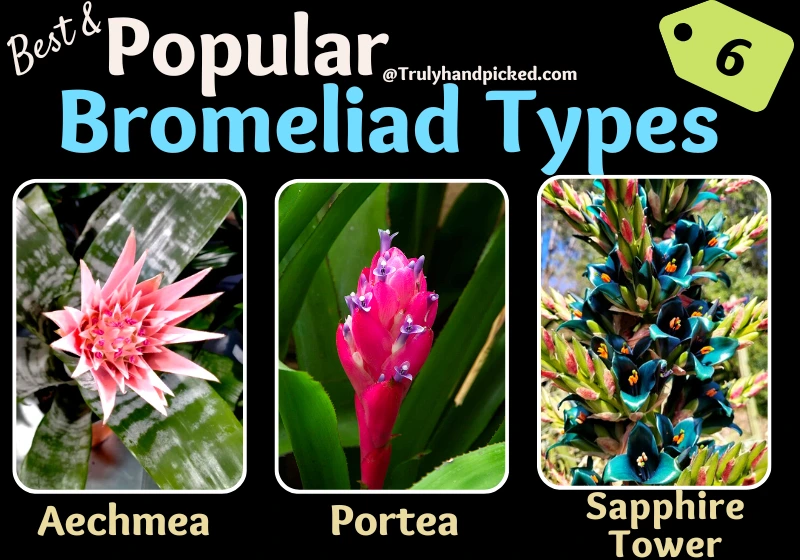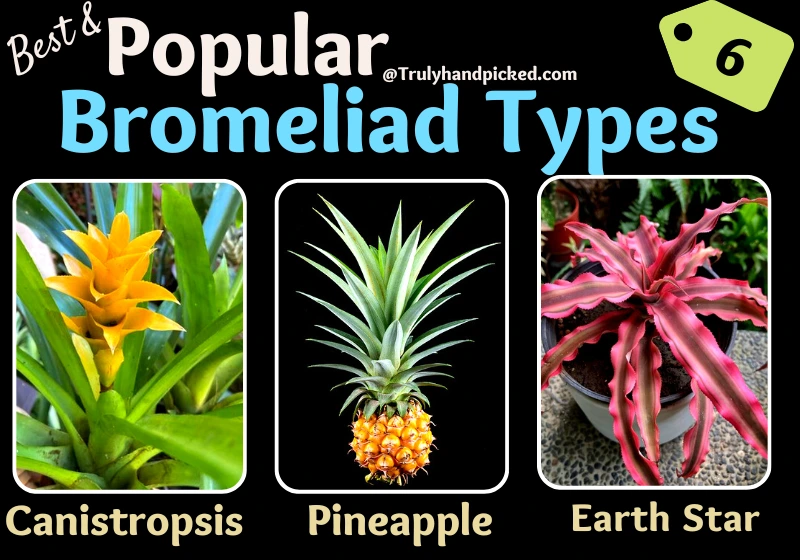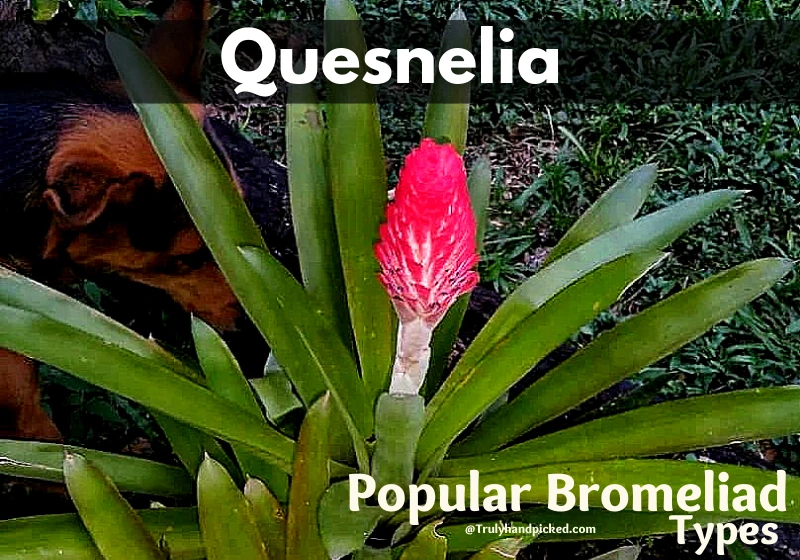If you think that the tips for growing bromeliads are done then, wait my buddy. Bromeliads are huge in variety and thus, their growing necessities always vary from place to place.
Jump to Content: Can Bromeliads Grow Outside? | Top Bromeliads Varieties | Where to Place Bromeliads (Grow)
Sun and Shade Loving Bromeliads – Steps for Growing Bromeliads Outdoors
Hence, here we come up with some more cultivating tips for bromeliads along with a brief introduction of the top bromeliad types through our discussion below-
Can Bromeliads Grow Outside?
- Bromeliads can indeed venture beyond indoor pots and thrive outdoors.
- Understanding their origins and needs paves the way for their success
- Bromeliads elevate interior aesthetics with their unique forms and vivid colors.
- They’re prized possessions for indoor gardeners seeking exotic allure.
Bromeliads are tropical plants and thus you can grow them outside your house in an open outdoor garden easily. Treat your outdoor bromeliads like any other flowering bromeliad plants to give them the best thriving conditions. Find out the most useful tips in this regard-
- Pick a spot where your plant can get bright light with dappled shade
- Prepare the garden soil with well-drained capacity and slightly acidic pH
- Protect them from scorching sun heat, especially, during summer noon
- Make sure the spot has a high humidity level with a consistently warm temperature
- Prepare the soil with free-draining quality if you intend to sow your plant directly in the ground
- Sprinkle a layer of orchid potting mix and make it evenly moist before planting bromeliads in it
- Keep your plant weeds-free with a consistent monthly pruning session
- And provide it proper fertilization twice a year to steal the thriving condition out of your bromeliads.
Bromeliads Adapt to Outdoors
Indoor Comfort vs. Outdoor Adventure:
- Bromeliads are like house pets, cozying up indoors. But can they be outdoor explorers too?
- Think of them like your cat – they love a sunny windowsill, but can they also enjoy the garden?
Discovering Bromeliad Adaptability:
- Bromeliads are like adaptable friends who can have fun in different places.
- Just like your friend who loves both city and countryside, bromeliads can adapt to various environments.
Sun and Shade: Finding the Perfect Balance:
- Outdoor light is like food for plants. Some bromeliads like full sunlight, while others prefer some shade.
- Think of it like choosing between sunbathing and relaxing under a tree – each bromeliad has its preference.
Weather and Climate: Getting Cozy in Different Conditions:
- Bromeliads are like people with different weather preferences. Some like humidity, others are more chill.
- It’s like your friends – some love hot weather vacations, while others prefer cooler getaways.
Outdoor Living: Setting Up Their New Home:
- Preparing for outdoor life is like planning a picnic for your plants.
- Imagine giving your bromeliads a new home – a cozy spot in your garden or on the balcony.
Facing the Elements: Protecting Your Bromeliads:
- Think of outdoor life for bromeliads like a camping trip. They might face wind, rain, and temperature changes.
- Just like you’d take a raincoat and warm clothes, providing shelter and proper placement helps them thrive.
So, can bromeliads venture outside and flourish? Absolutely! By understanding their preferences and giving them a comfortable outdoor home, you’re opening a new chapter in their colorful lives.
Sun-loving Bromeliads and Shade Lovers
Sun Seekers:
- Aechmea fasciata (Silver Vase Bromeliad): Enjoys bright, indirect sunlight.
- Neoregalia carolinae (Blushing Bromeliad): It can handle some direct sunlight, especially in the mornings.
- Guzmania lingulata (Scarlet Star): This bromeliad loves bright light without harsh sun exposure. Imagine it as someone who enjoys being outside but prefers the shade of a wide-brimmed hat.
Shade-Seekers:
- Cryptanthus spp. (Earth Stars): These enjoy lower light levels and dappled shade, making them like forest floor dwellers enjoying the filtered sunlight.
- Nidularium spp. (Bird’s Nest Bromeliads): They’re excellent for shaded spots, similar to a plant that loves reading a book under a cozy tree.
- Vriesea spp. (Flaming Sword Bromeliads): These prefer bright, indirect light with some shade, like a sun-kissed spot that’s not too intense.
10 Steps for Growing Bromeliads Outdoors
Step 1: Choose the Right Bromeliad Species:
- Opt for outdoor-friendly bromeliad species that can handle sunlight and climate conditions in your region.
- Research and select varieties known for their ability to flourish outdoors.
Step 2: Select a Suitable Outdoor Spot:
- Find a location that offers the right amount of sunlight for your chosen bromeliad species.
- Consider factors like shade, wind exposure, and protection from harsh weather conditions.
Step 3: Prepare the Planting Area:
- Ensure well-draining soil by adding materials like perlite or bark to enhance drainage.
- If planting directly in the ground, amend the soil with organic matter to improve its texture and nutrients.
Step 4: Planting Bromeliads:
- Dig a hole that’s slightly larger than the root ball of your bromeliad.
- Place the plant in the hole, ensuring the base of the plant is at ground level.
- Backfill the hole with soil and gently pat it down to secure the plant.
Step 5: Watering and Moisture:
- Water your newly planted bromeliad thoroughly after planting to help settle the soil.
- Monitor the soil moisture to avoid overwatering – bromeliads prefer to be slightly moist, not soggy.
Step 6: Provide Adequate Sunlight:
- Depending on the species, place your bromeliads in areas with the right amount of sunlight.
- Ensure they receive the appropriate balance of direct sunlight and shade.
Step 7: Protect from Harsh Elements:
- Shield your bromeliads from extreme weather conditions, such as intense sun or heavy rain.
- Use shade cloth or other protective measures to create a comfortable environment.
Step 8: Fertilizing:
- Use a diluted, balanced liquid fertilizer during the growing season.
- Apply the fertilizer sparingly, following the manufacturer’s instructions.
Step 9: Regular Maintenance:
- Remove dead or faded leaves to maintain the plant’s appearance.
- Keep an eye on the overall health of the bromeliad and address any issues promptly.
Step 10: Overwintering:
- In colder climates, consider bringing your bromeliads indoors during the winter months.
- Provide adequate light and maintain proper care while they’re indoors.
Top Bromeliads Varieties

Bromeliads are one of those popular decorative plants that include almost a plethora of diffident species in their single genera.
Here we refer to the best 7 varieties of bromeliad category, which are super pretty to peek at. These plants hold an amazing glance and are followed by super easy caring methods.
Let’s take a quick look at them to find out which is more compatible for your garden-
Aechmea Bromeliad:
Description:
Aechmea bromeliads are one prevalent bromeliad species that grows wide and long foliage with pointed designs.
Leaves of this plant grow in a spear shape with a waxy coating in a light or pale green tint. It blooms with bulbous spiked blossoms at the center of the plant. This bromeliad can grow up to 2 ft. tall with equal width.
Growing Outside: Yes Be it indoors or outdoors Aechmea adapts well
Flowering: Flowering lasts for 6 months (With proper care)
Caring Needs:
- This plant can grow in any type of fertile potting mix with well-drained quality
- Water your plant once every seven to ten days with filtered water
- Provide your plant with moderately bright indirect light and feed it with a liquid fertilizer monthly
- Keep the climate consistently warm and humidity always high
Related: Best-looking plants with beautiful spiky leaves
Portea Bromeliad:
Description:
This species of bromeliad is noted for its exclusive look and amazing flower. The extraordinarily attractive flower blooms with striking color variegation in blue, purple, and hot pink shades.
Portea bromeliad leaves grow with sharp edges in a leaf-green tint. It can thrive up to 4 ft. in height with an approximate 2 ft. width.
Bromeliads love the tropical season so growing outdoors in bright light (not scorching direct) will reward you with long-lasting flowers. If not planted in the ground bring them indoors in winter.
Caring Needs:
- Use porous and well-drained soil with fully fertile quality
- Place it under full sun and water only when the topsoil turns completely dry
- This species of bromeliads can stand hard frosty days but can’t tolerate low-humidity
- Feed your plant yearly by applying any balanced water-soluble fertilizer in liquid form
Related: Quick tips Bromeliad complete care – what not to do
Sapphire Tower Bromeliad (Puya Alpestris):
Description:
If you are searching for good-looking bromeliads then, sapphire tower bromeliads are surely the best pick for you.
It produces a unique blooming stalk in a combination of metallic teal shades with vibrant orange anthers at the center. It can grow up to 4 ft. tall when matured entirely.
Caring Needs:
- Pick a well-drained rich soil with a neutral pH level
- Water your plant only twice a month as it is a drought-tolerant bromeliad species
- It can stand direct to indirect both types of light with high humidity
- Feed your sapphire bromeliads with a commercial succulent food once a year in diluted form

Pineapple Bromeliad:
Description:
Yeah, you read it right, pineapple is a type of bromeliad species indeed! It produces rosette leaves with sharp, pointy, and curvy edges that grow with a waxy thick layer, especially at the sap.
Pineapple is the only bromeliad species that produces edible fruit – yes sweet tangy fruit from this bromeliad is safe and edible.
This species produces a super-tasty starchy tropical fruit from its central inflorescence. It can grow up to 3 to 5 ft. tall and approximately 2 ft. widespread.
Tip: Too of water and heat will turn them off. Even with little water and bright sunlight, they can survive better (avoid overcaring).
Related: Can you eat a cactus? edible cactus fruits
Caring Needs:
- Chose fully fertile and well-drained soil to sow this bromeliad type
- Water it weekly to keep the soil consistently moist but never soggy at all
- Provide your plant with bright but indirect light for six to seven hours a day
- As it is a cropping plant, feed it once every couple of months with a balanced liquid fertilizer consistently
Canistropsis Bromeliad:
Description:
Canistropsis bromeliads are those species that produce supremely pretty flower stalks in various bright colors. Flowers can bloom in orange, pink, red, and sometimes bright yellow shades.
Leaves of this plant grow in a rosette lance-shaped pattern in a glossy green tint. A fully mature plant can grow up to 8 inches tall with a similar spread.
Caring Needs:
- Prepare the soil by amending it with peat moss, compost, and normal potting mix
- Water your plant weekly with 1-inch deep watering to keep the soil consistently moist
- Place it under the sun with partial shade and maintain a warm climate with high humidity
- Fertilize your plant twice a year during peak months with any all-purpose commercial fertilizer in half-strength
Related: My bromeliads are turning brown – how to fix
Earth Star Bromeliad:
Description:
Its name stays all about the beauty of the Cryptanthus bromeliad species. It’s a super gorgeous appearance worth the name Earth Star accurately.
The foliage of this species can grow in various patterns like stripes, bands, spots, and even splotches over the solid color surface. Leaves can grow in a range of colors and thus, seem like starflowers when fully thrived.
Caring Needs:
- Pick coarse, rich, and well-drained soil with an acidic pH level
- Keep the soil evenly moist by watering moderately per week
- Place in plant bright but indirect light with a warm growing temperature and high humidity
- Fertilize your plant with a diluted fertilizer once every three weeks during the peak season

Quesnelia Bromeliad:
Description:
This species of bromeliads produces flowers in pineapple shape but in bright shades like yellow, violet, raspberry pink, red, etc. It produces long, pointy sward-like foliage in a subtle green shade.
Quesnelia bromeliads can grow from a tree in their natural habitat instead of from seed or stems. It can thrive up to 8 inches tall with a similarly widespread.
Caring Needs:
- Use sturdy, sandy, and fertile soil with well-drained quality
- Place it under bright but indirect sunlight and water average per week
- Provide your plant averagely warm climate with high humidity
- And fertilize with water-soluble orchid food twice a month during the growing seasons
Where To Place Bromeliads?
To bring the best thriving condition out of a growing bromeliad plant, you must learn about the best spot to place your bromeliads in your house. Here are some quick tricks in this endeavor-
- Choose a spot with bright but indirect light
- Make sure your chosen place has good air circulation
- Keep the humidity level always high in that place
- You can place the planter on a pebbles-water tray (humidity) if you want in this regard
- Make sure that your plant can get at least 5-6 hours of sunlight every day during its entire growing session.
FAQ: Can Bromeliads Take Full Sun?
Many bromeliad species can tolerate full sun under bright and direct sunlight, depending on their light needs. But not all bromeliads can stand it and grow healthily under full sun exposure.
Should I Cut The Dead Flowers off My Bromeliads?
You can trim and cut back the dead flower out of a bromeliad plant while pruning your plant. However, keeping it untouched and letting the dead flower wither over time is one more attempt you can try here, especially, when you don’t intend to grow it again from pups.
Removing spent flowers is good for aesthetic value and yes it promotes healthy growth of your bromeliads.
